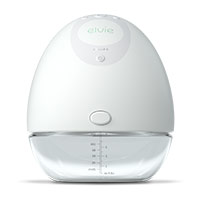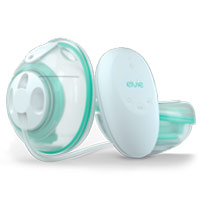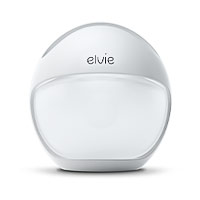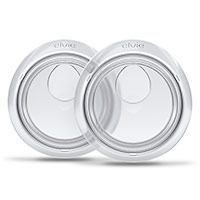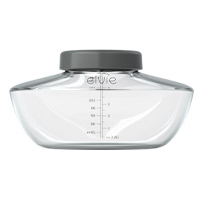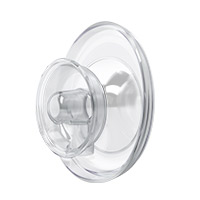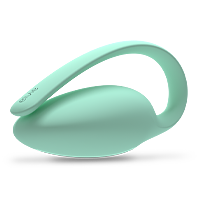This blog post was updated on 29/08/23
Concerns regarding low breast milk supply is one of the most common reasons new mothers stop breastfeeding. If you’re struggling with a low supply, the good news is that with specialist support there are some natural ways you can increase your milk supply — from skin to skin contact to ensuring you are practising responsive feeding. But what about the food you put in your mouth? Can your meal choices help to boost your milk flow mojo?
In this post we’ll explore lactogenic foods — in other words, foods that increase prolactin (in theory, at least), a hormone that stimulates milk production after childbirth. So, which foods are considered ‘lactogenic’? And can they really promote lactation and amplify your supply? Let’s find out.
What are lactogenic foods?
Also referred to as galactagogues (“galacta” being the Greek word for milk), lactogenic foods theoretically support lactation by increasing the production of prolactin, the hormone responsible for building your milk supply. Foods such as fennel, barley, and leafy greens (which we’ll explore in more detail shortly) are thought by some to boost milk production so that your baby gets an ample supply of the good stuff.
While the science behind galactagogues is admittedly lacking, this doesn’t stop it from being one of the most Googled terms by new moms, with many women from many different cultures swearing by the breastfeeding benefits of certain foods and natural remedies.
Can lactogenic foods increase lactation?
The truth is, the scientific jury is kind of out on lactogenic foods, aka foods that support lactation. Not enough studies have been done to guarantee that certain ingredients alone can increase your milk supply, and in fact, La Leche League International advises that new moms needn’t necessarily follow any special diet while they’re breastfeeding — a varied, well-balanced diet is the way to go.
It’s also important to remember that everyone’s body is different, and while galactagogues may increase the milk supply of some new moms, they might equally have little to no effect on others. That said, most lactogenic foods are packed with nutritional value anyway, so there’s certainly no harm in trying to incorporate more of them into your diet.
It’s worth noting as well that whatever the touted milk-producing benefits of lactogenic foods, they’re unlikely to boost milk production on their own.
If you have concerns about low milk supply the most important thing you can do to increase your supply is to feed frequently and effectively. Seek timely qualified breastfeeding support where you will be given advice about the importance of regularly and effectively removing milk — whether that means direct breastfeeding, or feeding with additional pumping after feeds — this is the most effective way to increase and maintain your milk supply.
Foods that increase breast milk
Many foods are considered to have lactogenic properties, from leafy veg to raw nuts. But which foods should you opt for to promote lactation? Can they really help stimulate milk production? And what additional benefits do they offer breastfeeding mothers? Let’s delve into some of these so-called milk-boosting ‘superfoods’.
Fennel and fenugreek
Fennel may be a bit of a strange-looking vegetable with a funky hairdo, but it’s long been regarded as a natural way to increase breastmilk supply. It's actually been used for its lactogenic properties in India and the Middle East for centuries.
The evidence of fenugreek increasing breast milk supply is mostly anecdotal, there isn’t a lot of data to explain how it does this. However, the suspected action is that it stimulates sweat production and the mammary glands (breasts) are a modified sweat gland.
While fenugreek has multiple health benefits, you can have too much of a good thing: if you consume more than you need, it can cause side effects — including diarrhoea. Eating the plant itself is a gentler way of getting the nutrients you need, and there are many ways to enjoy it — raw in a salad or roasted alongside chicken or fish, for example.
Leafy greens and colourful vegetables
There’s no huge mystery behind this piece of advice — everyone knows that eating enough vegetables is the cornerstone of a healthy diet, after all — and that certainly goes for new moms, too. Leafy greens are packed full of nutrients for both you and your baby — but that doesn’t mean your plate needs to look like rabbit food.
A great way to ensure you’re getting the vitamins you need is to give your meal plan the rainbow treatment, and each colour has its own benefits for breastfeeding.
Many dark leafy greens like kale and spinach, for instance, have lots of phytoestrogens, which anecdotally are thought by some to influence milk production. If you want to mix it up a little bit, dandelion greens and stinging nettles are known as two of the best greens for lactogenic purposes.
When it comes to the brighter end of the colour spectrum, you’ll still find plenty of foods that may benefit breastfeeding. Yams, beetroots and carrots are bursting with betacarotene, which is a found in breastmilk.
Barley and barley malt
The theory that a tall pint of beer can help increase milk production may be a bit of an old wive’s tale, but there may be a grain of truth in it (literally). Barley and malt are key ingredients in beer and are both perceived as great lactogenic foods.
Barley is one of the richest dietary sources of beta-glucan — a polysaccharide that may increase prolactin, the hormone responsible for lactation — as well as tryptophan. However, alcohol has also been proven to inhibit your milk let down reflex, and of course, drinking alcohol while breastfeeding should done with caution as it can be passed on to your baby.
A safer way to get up your barley content is to consume it directly. You can include it in soups or stews, sprinkle it on top of your salad, or even include it in your next batch of home-baked bread!
If you have a sweet tooth, pure barley malt can be used as a healthy, breastmilk-friendly substitute for maple syrup when baking cakes and cookies. Oats also consistently feature on lists of lactogenic foods, so having oatmeal with barley malt on top will give you double the breastfeeding benefits before you’re even out of your pyjamas.
Brewer's yeast
Brewer’s yeast has long been a favourite of nursing mothers and is a recurring ingredient in lactation cookies and breastfeeding teas. But just why do so many women swear by it?
Well, for one thing it’s packed full of vitamins, especially B vitamins, iron, and protein, so its healthy credentials are already pretty high. It also has phytoestrogen and polysaccharides,— both of of which are contained in breastmilk. These nutrients can help boost your energy levels (exactly what a tired new mom needs) and if that's not enough, it has probiotic properties too, which are amazing for supporting gut health.
Like barley and oats, brewer's yeast can be incorporated into your baking recipes, or you could even add it to pancakes or healthy homemade smoothies.
Raw nuts
While there are no specific studies confirming the milk-boosting benefits of eating raw nuts such as almonds, cashews, walnuts and macadamias, many nuts contain tryptophan, an amino acid that aids serotonin production (said to be an essential neurotransmitter for lactation).
In addition, raw nuts are also a healthier pick-up-and-go snack than sugar- and calorie-laden alternatives such as cookies, and a great quick energy boost for busy, sleep-deprived moms. Simply eat them as they come, add them as a salad topping, or enjoy an occasional glass of almond milk.
So, can almonds, walnuts and cashews really help to boost an ailing milk supply? Well, you’d be nuts not to at least give them a try.
Garlic
Some herbs and spices — including garlic but also black pepper, basil and turmeric — are said to have a positive impact on milk supply. While these claims aren’t verified at this stage, you don’t have anything to lose by trying it.
Garlic offers a number of additional health benefits, too — from contributing to a healthy immune system, to helping to reduce blood pressure and lowering cholesterol levels.
Now, while we may be waiting for more in-depth studies to unequivocally prove the lactogenic benefits of these foods, they’re nonetheless packed full of nutrients and vitamins that are going to be great for your overall health, and that of your baby. As long as you’re including them as part of a varied, healthy diet, there’s no harm in giving them a go.
The most important way you can support or increase milk supply is by frequent and effective removal of milk from the breasts by breastfeeding, pumping or a combination of both. If you have concerns regarding low milk supply then as a first step seek qualified breastfeeding support from a lactation consultant.
The medical information in this article is provided as an information resource only and is not to be used or relied on for any diagnostic or treatment purposes. Please consult your doctor for guidance about a specific medical condition.


